kabuto
Attributes
- Species: Kabuto
- Base Experience: 71
- Height: 5
- Weight: 115
- Is Default: True
- Order: 230
- Base Happiness: 70
- Capture Rate: 45
- Color: Brown
- Egg Groups: Water1 , Water3
- Gender Rate: 1
- Has No Gender Differences
- Hatch Counter: 30
- Habitat: Sea
- Is Baby: False
- Is Legendary: False
- Is Mythical: False
- Shape: Armor
Stats
-
HP
-
Attack
-
Defense
-
Special Attack
-
Special Defense
-
Speed
Summary
Kabuto is a Rock/Water-type Pokémon introduced in Generation I.
Type: Rock / Water
Abilities:
- Swift Swim: Doubles the Pokémon's Speed stat in rain.
- Battle Armor (Hidden Ability): Protects the Pokémon from critical hits.
Physical Characteristics:
- Kabuto is a small, bivalve Pokémon that resembles a trilobite.
- It has a hard, brown shell covering most of its body, with a smooth, rounded surface.
- Two large, glowing red eyes are visible on the front of its shell.
- Its underbelly is tan and segmented, featuring four small, pointed legs.
Behavior and Habitat:
- Kabuto is primarily found in prehistoric aquatic environments, often restored from fossils.
- It is believed to have thrived in warm, shallow seas.
- Known to be a scavenger, it feeds on small marine organisms.
- Kabuto is rarely seen in the wild today, as it is mostly revived through scientific means from its Dome Fossil.
In Battle:
- Kabuto is a defensive Pokémon with solid physical attack capabilities.
- Its notable moves include Aqua Jet, Ancient Power, and Rock Slide.
- It can effectively counter Fire, Flying, and Bug-type Pokémon.
- Kabuto is weak against Electric, Fighting, and Grass-type attacks.
Evolution:
- Evolves from a Dome Fossil, typically revived in a laboratory setting.
- Evolves into Kabutops starting at level 40, gaining heightened speed and attack capabilities.
Interesting Facts:
- Kabuto's design is inspired by the extinct trilobites, which were marine arthropods.
- It is one of the few Pokémon that can be revived from fossils, linking it to ancient times.
- In the Pokémon anime, Kabuto is often depicted as living in secret colonies on certain islands.
- Despite its ancient origins, Kabuto is sometimes found in museum exhibits, showcasing its historical significance.
Pokémon Sprites
Evolution Chain
Moves
Level Up
- Level 1: Scratch
- Level 1: Harden
- Level 25: Mud Shot
- Level 28: Sand Attack
- Level 30: Rock Throw
- Level 31: Aqua Jet
- Level 34: Absorb
- Level 37: Endure
- Level 39: Slash
- Level 43: Metal Sound
- Level 44: Leer
- Level 46: Mega Drain
- Level 48: Leech Life
- Level 49: Hydro Pump
- Level 50: Liquidation
- Level 51: Wring Out
- Level 55: Ancient Power
- Level 60: Stone Edge
TM/HM
- Headbutt
- Body Slam
- Take Down
- Double Edge
- Water Gun
- Surf
- Ice Beam
- Blizzard
- Bubble Beam
- Toxic
- Rage
- Mimic
- Double Team
- Reflect
- Bide
- Waterfall
- Rest
- Substitute
- Thief
- Snore
- Curse
- Protect
- Icy Wind
- Sandstorm
- Giga Drain
- Rollout
- Swagger
- Attract
- Sleep Talk
- Return
- Frustration
- Hidden Power
- Rain Dance
- Rock Smash
- Whirlpool
- Hail
- Facade
- Secret Power
- Rock Tomb
- Aerial Ace
- Rock Blast
- Water Pulse
- Brine
- Natural Gift
- Rock Polish
- Captivate
- Stealth Rock
- Hone Claws
- Smack Down
- Round
- Scald
- Confide
Other
Flavor Text Entries
- Red: A Pokémon that was resurrected from a fossil found in what was once the ocean floor eons ago.
- Blue: A Pokémon that was resurrected from a fossil found in what was once the ocean floor eons ago.
- Yellow: A Pokémon that was recovered from a fossil. It uses the eyes on its back while hiding on the sea floor.
- Gold: On rare occasions, some have been found as fossils which they became while hiding on the ocean floor.
- Silver: This Pokémon lived in ancient times. On rare occasions, it has been discovered as a living fossil.
- Crystal: Three hundred million years ago, it hid on the sea floor. It also has eyes on its back that glow.
- Ruby: KABUTO is a Pokémon that has been regenerated from a fossil. However, in extremely rare cases, living examples have been discovered. The Pokémon has not changed at all for 300 million years.
- Sapphire: KABUTO is a Pokémon that has been regenerated from a fossil. However, in extremely rare cases, living examples have been discovered. The Pokémon has not changed at all for 300 million years.
- Emerald: It is a Pokémon that has been regenerated from a fossil. However, in rare cases, living examples have been discovered. KABUTO have not changed for 300 million years.
- Firered: This Pokémon was regenerated from the fossil of an ancient creature. It protects itself with a hard shell.
- Leafgreen: A Pokémon that was regenerated from a fossil found in what was once the ocean floor long ago.
- Diamond: It is thought to have inhabited beaches 300 million years ago. It is protected by a stiff shell.
- Pearl: It is thought to have inhabited beaches 300 million years ago. It is protected by a stiff shell.
- Platinum: It is thought to have inhabited beaches 300 million years ago. It is protected by a stiff shell.
- Heartgold: On rare occasions, some have been found as fossils which they became while hiding on the ocean floor.
- Soulsilver: This Pokémon lived in ancient times. On rare occasions, it has been discovered as a living fossil.
- Black: It is thought to have inhabited beaches 300 million years ago. It is protected by a stiff shell.
- White: It is thought to have inhabited beaches 300 million years ago. It is protected by a stiff shell.
- Black-2: It is thought to have inhabited beaches 300 million years ago. It is protected by a stiff shell.
- White-2: It is thought to have inhabited beaches 300 million years ago. It is protected by a stiff shell.
- X: It is thought to have inhabited beaches 300 million years ago. It is protected by a stiff shell.
- Y: This Pokémon was regenerated from the fossil of an ancient creature. It protects itself with a hard shell.
- Omega-Ruby: Kabuto is a Pokémon that has been regenerated from a fossil. However, in extremely rare cases, living examples have been discovered. The Pokémon has not changed at all for 300 million years.
- Alpha-Sapphire: Kabuto is a Pokémon that has been regenerated from a fossil. However, in extremely rare cases, living examples have been discovered. The Pokémon has not changed at all for 300 million years.
- Ultra-Sun: This Pokémon thrived 300 million years ago. It’s said that living specimens can still be seen in a certain region—a rare sight.
- Ultra-Moon: This Pokémon became extinct everywhere, except in a few areas. It protects itself with its hard shell.
- Lets-Go-Pikachu: A Pokémon that was recovered from a fossil. It used the eyes on its back while hiding on the seafloor.
- Lets-Go-Eevee: A Pokémon that was recovered from a fossil. It used the eyes on its back while hiding on the seafloor.
- Sword: This species is almost entirely extinct. Kabuto molt every three days, making their shells harder and harder.
- Shield: While some say this species has gone extinct, Kabuto sightings are apparently fairly common in some places.
Cards
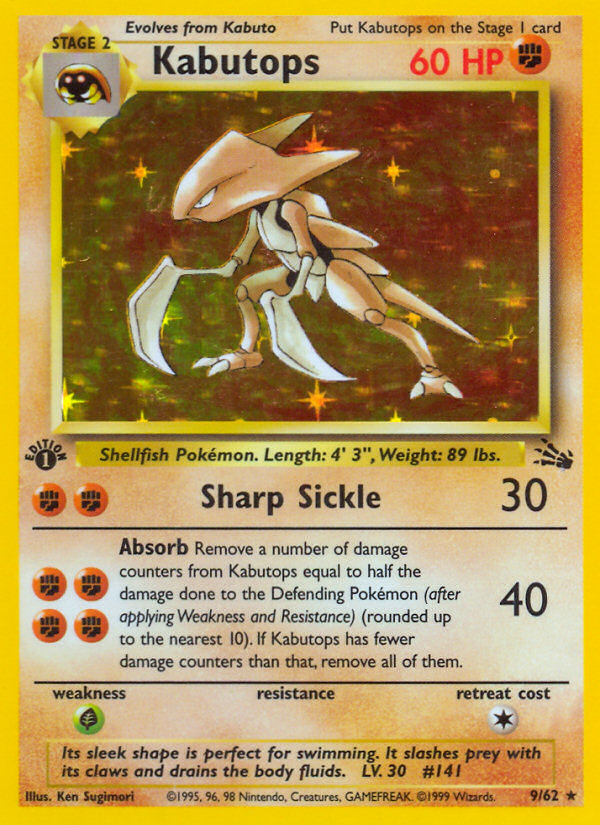
Created by Ken Sugimori for the Unknown Set set.
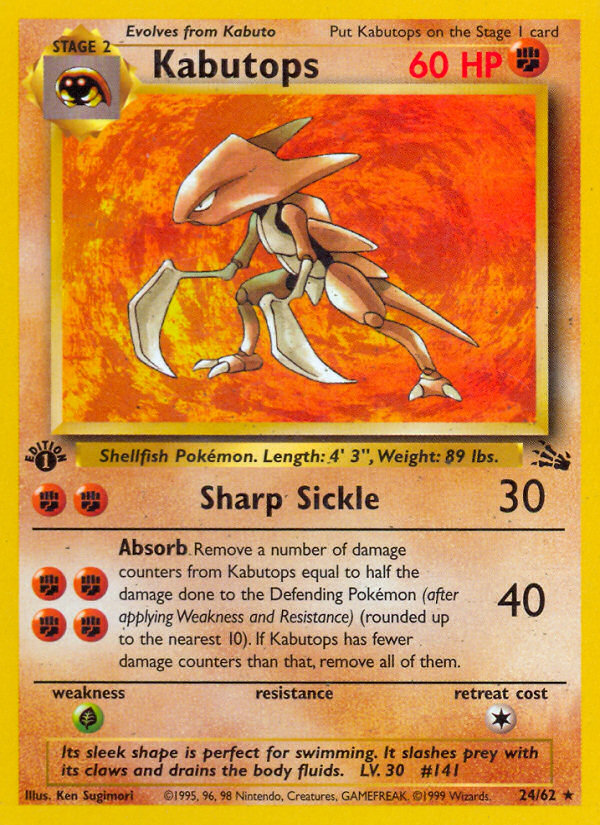
Created by Ken Sugimori for the Unknown Set set.
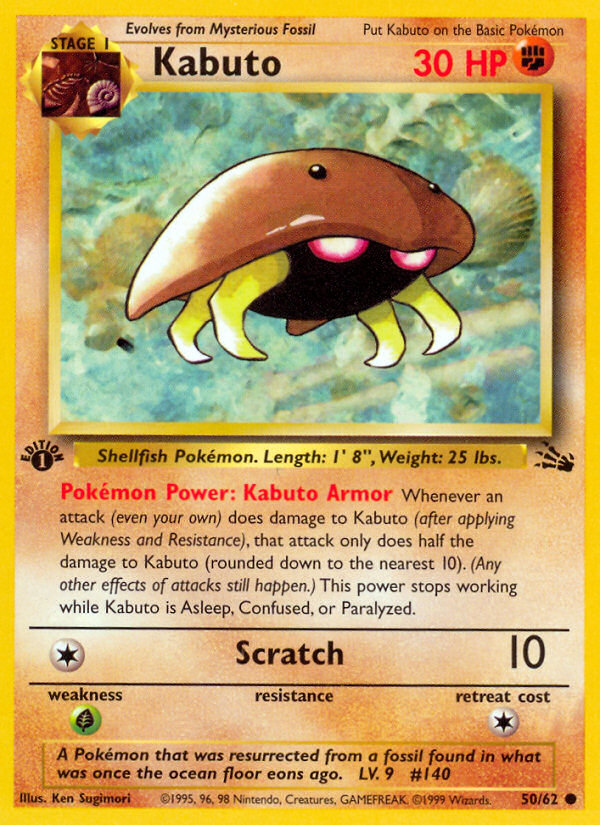
Created by Ken Sugimori for the Unknown Set set.
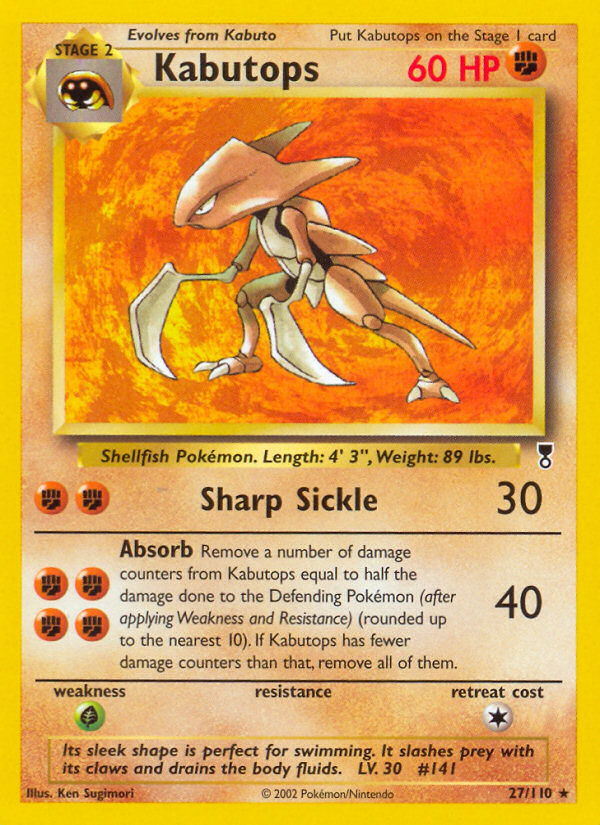
Created by Ken Sugimori for the Unknown Set set.
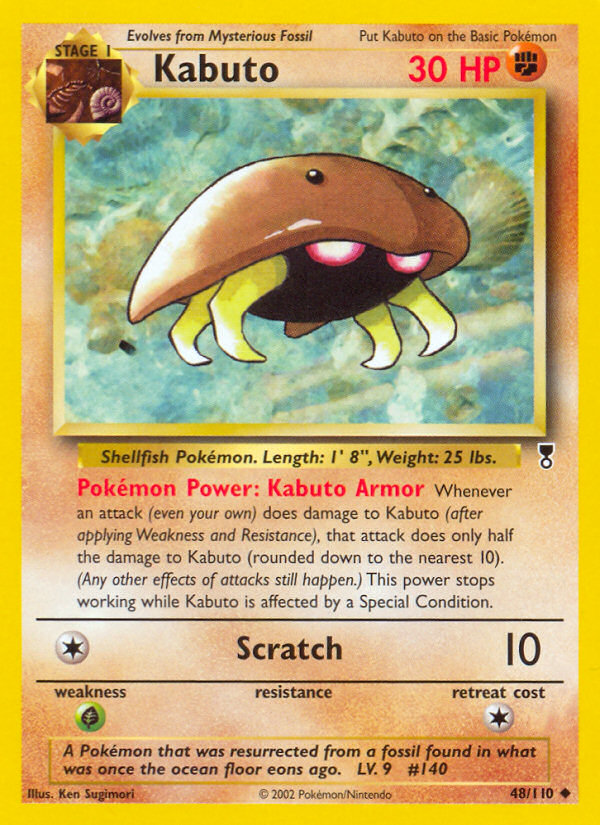
Created by Ken Sugimori for the Unknown Set set.
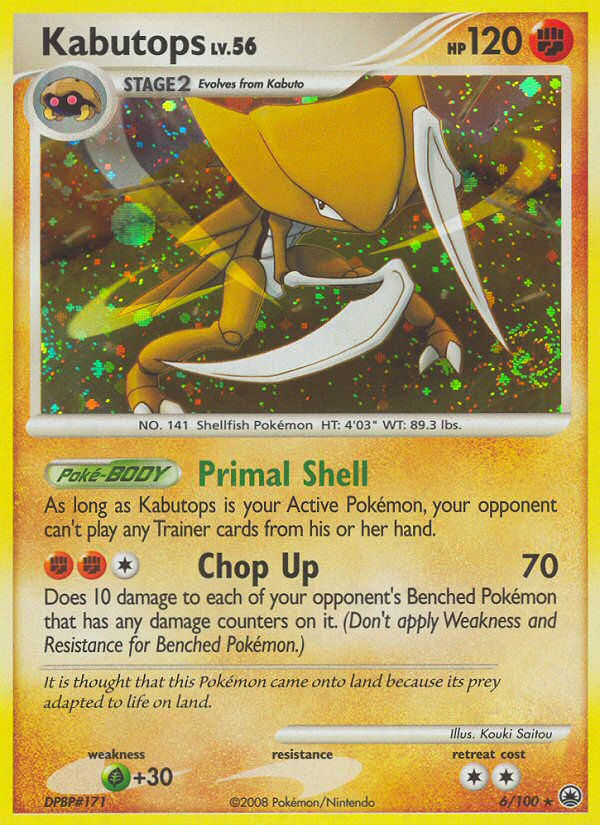
Created by Kouki Saitou for the Unknown Set set.
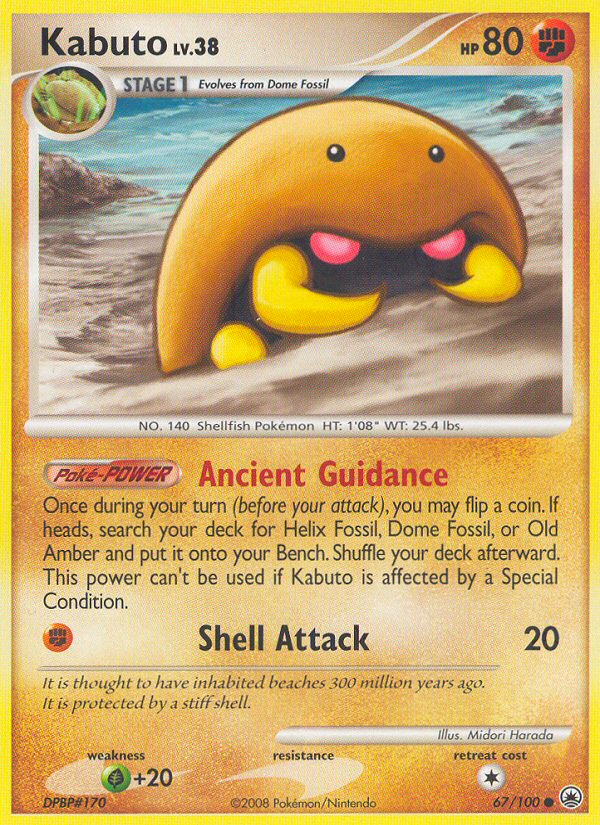
Created by Midori Harada for the Unknown Set set.

Created by Kouki Saitou for the Unknown Set set.
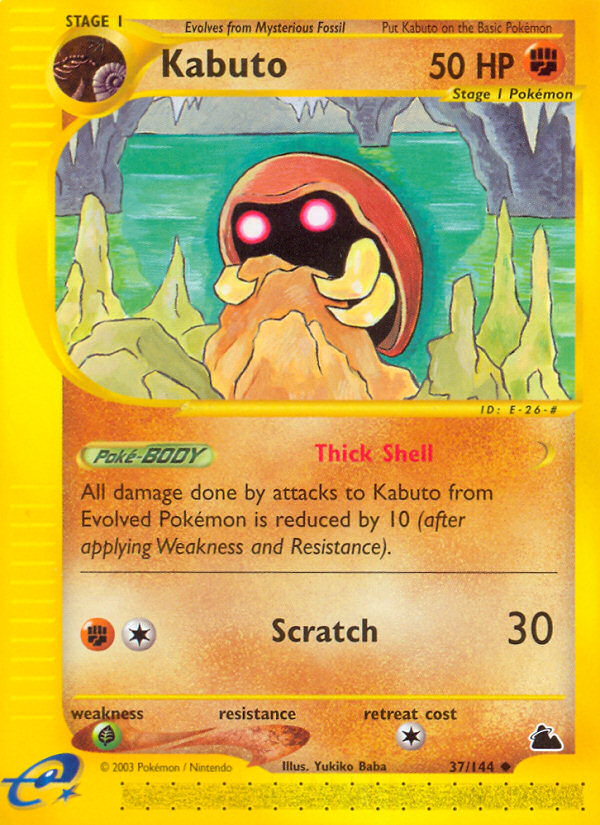
Created by Yukiko Baba for the Unknown Set set.
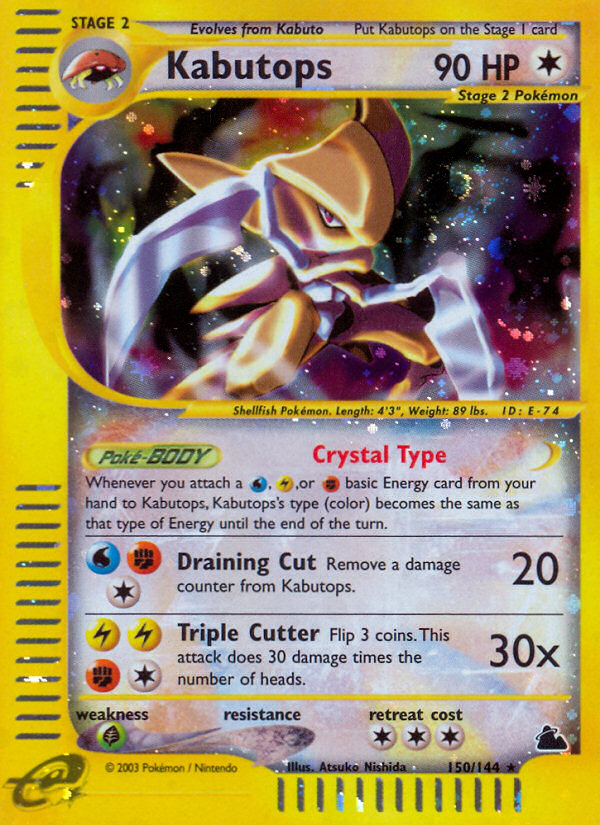
Created by Atsuko Nishida for the Unknown Set set.
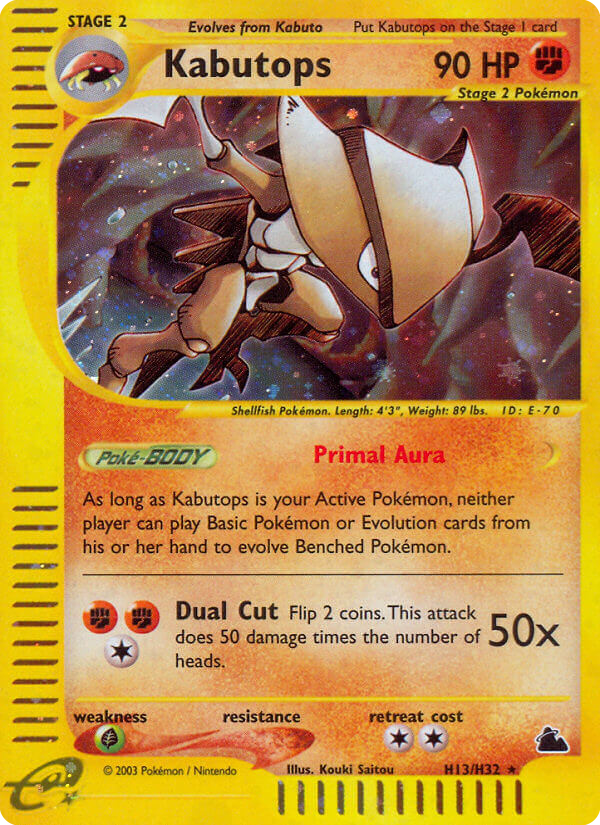
Created by Kouki Saitou for the Unknown Set set.
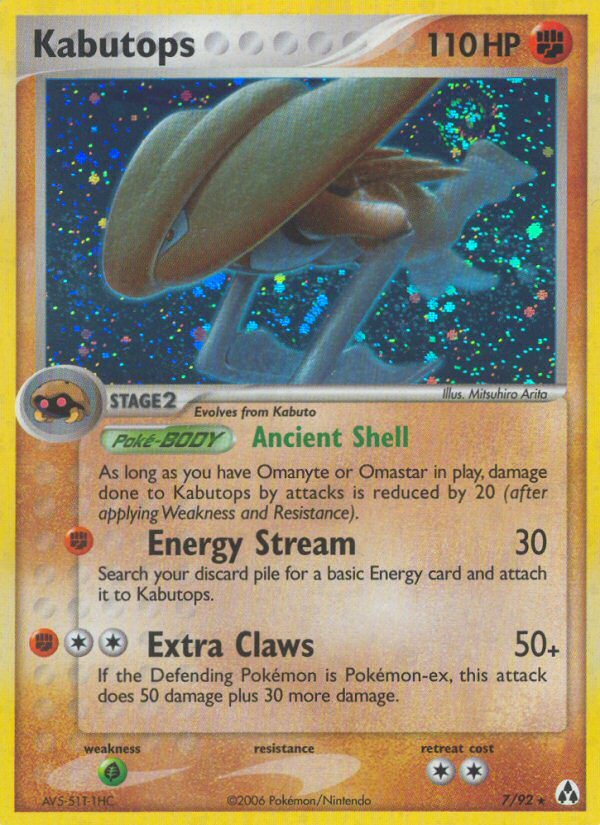
Created by Mitsuhiro Arita for the Unknown Set set.
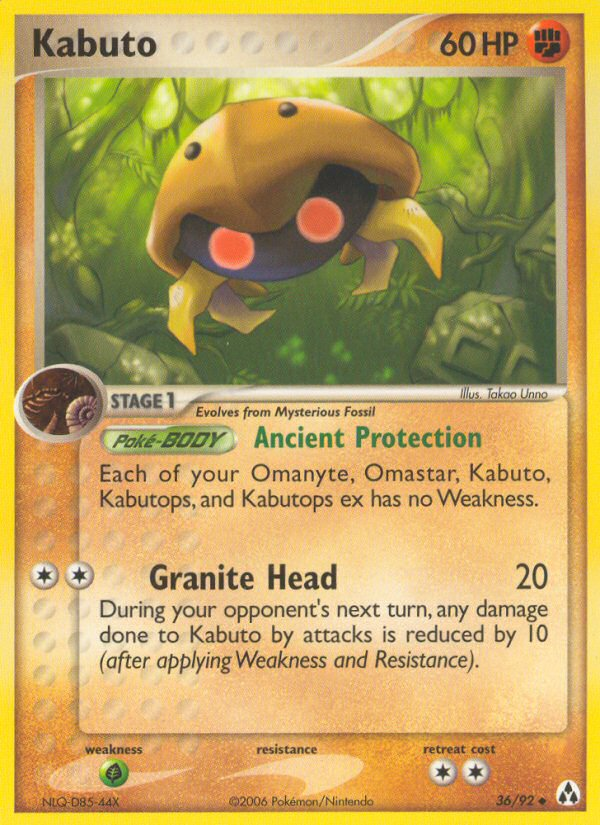
Created by Takao Unno for the Unknown Set set.

Created by Masakazu Fukuda for the Unknown Set set.

Created by Hajime Kusajima for the Unknown Set set.
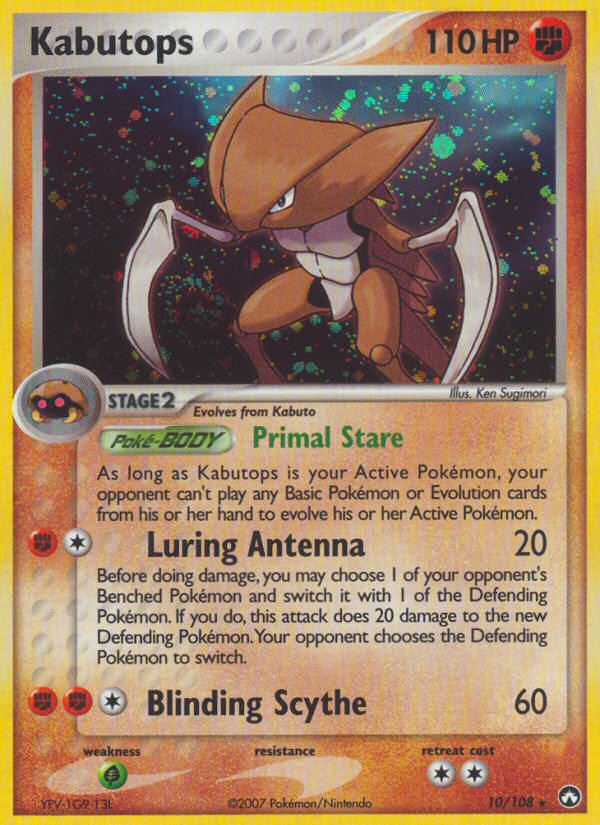
Created by Ken Sugimori for the Unknown Set set.
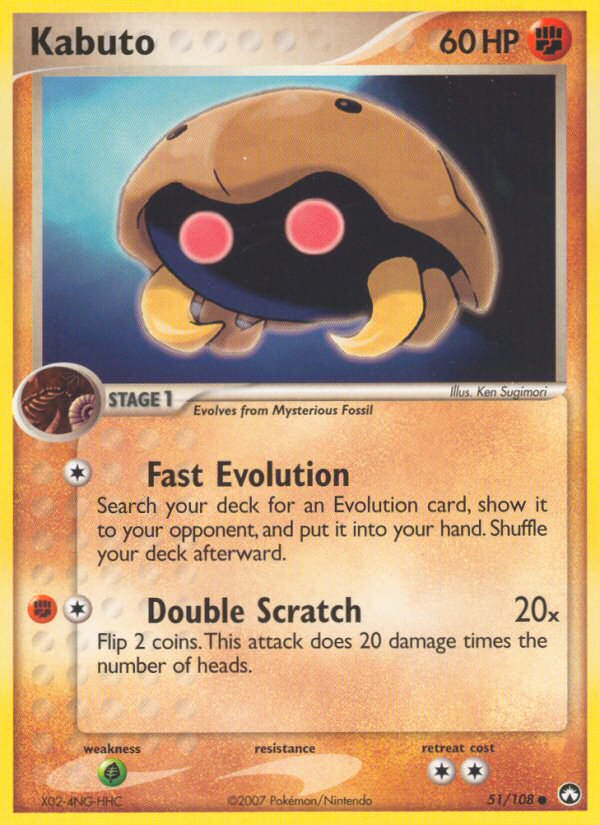
Created by Ken Sugimori for the Unknown Set set.
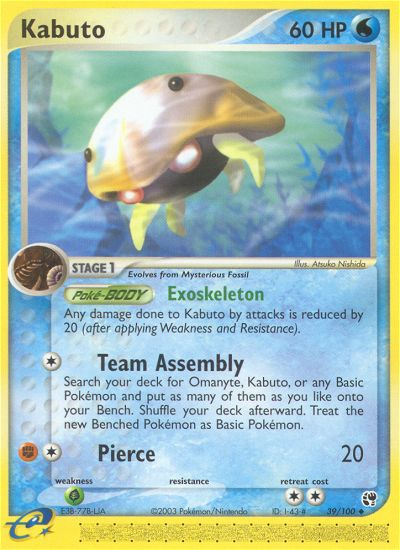
Created by Atsuko Nishida for the Unknown Set set.
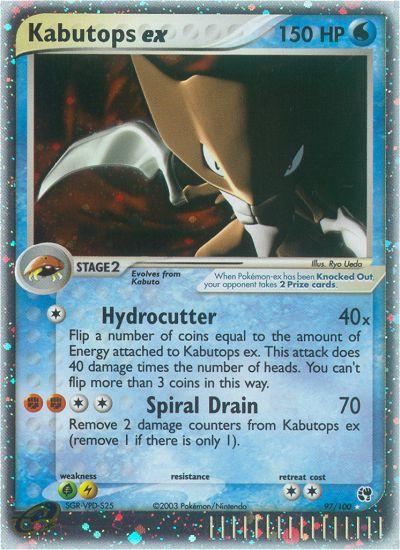
Created by Ryo Ueda for the Unknown Set set.

Created by Kimiya Masago for the Unknown Set set.
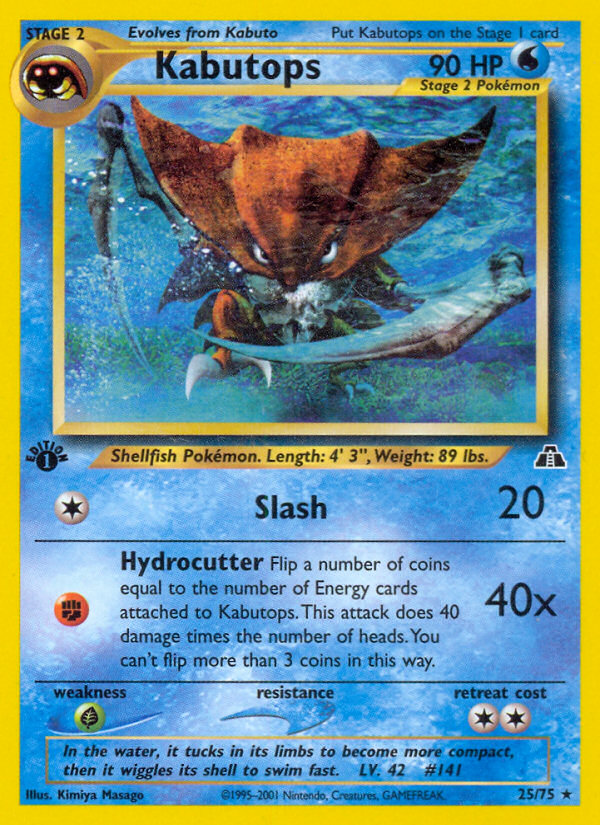
Created by Kimiya Masago for the Unknown Set set.
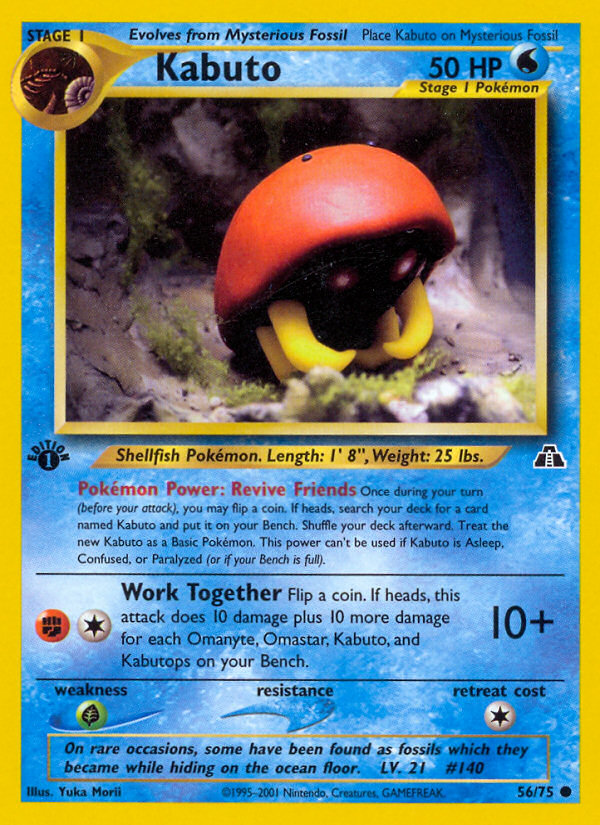
Created by Yuka Morii for the Unknown Set set.

Created by Hironobu Yoshida for the Unknown Set set.

Created by Hajime Kusajima for the Unknown Set set.

Created by Hironobu Yoshida for the Unknown Set set.

Created by Sui for the Unknown Set set.

Created by Shin Nagasawa for the Unknown Set set.

Created by Souichirou Gunjima for the Unknown Set set.

Created by Souichirou Gunjima for the Unknown Set set.

Created by Mahou for the Unknown Set set.

Created by Kyoko Umemoto for the Unknown Set set.

Created by Toyste Beach for the Unknown Set set.